Last Updated on June 3, 2023 by Ellen
As a retired budget traveler, I noticed something after three continents, a dozen countries and a hundred cities: places without American fast-food chains and brands advertised at every turn make me feel more like a traveler to foreign lands. Those brands have not yet saturated Albania, and it’s one reason I really like the capital Tirana.
Capitalism is alive and well here in this former communist country that was closed off to the world for decades. Coca-cola was the first American company to move in 27 years ago. Since then, more brands have gradually appeared, along with more tourists. But, dozens of foreign fast-food chains haven’t tainted Tirana — yet.
Authentic food and neighborhoods, great prices, and friendly people are some reasons why we extended our stay by one day, and why we would come back and stay longer next time.
Food in Tirana
KFC is the only fast-food chain in the city. There are two locations. The second location opened across the street from the former communist leader’s home.
The local version of Starbucks is Mulliri Vjeter – a popular Albanian-owned cafe with three locations in Tirana. It feels a bit like an American coffee shop with everything from espresso to pastries, wifi included. One espresso, one iced espresso, and one large, moist chocolate muffin cost us $2.75. What would that cost in Starbucks?

The plazas packed with cafes and restaurants. In fact, Tedly believes there are more cafes here than any place we’ve been to so far. He might be right.
Cafes serve beer here. While the majority of the population is Mulism, these are progressive Muslims. Not all women are all covered; people eat pork; there are many gambling bars and casinos; alcohol is easily bought all over the city. It’s easy to find places that sell a half liter for about $1.
Good restaurants are everywhere, including desert shops. Frankly, Tirana could be a foodie’s heaven. We tried some delicious local dishes, including pispili (an egg and spinach pie for under $4) and vegetarian fergese (feta cheese with bell peppers for just over $3).
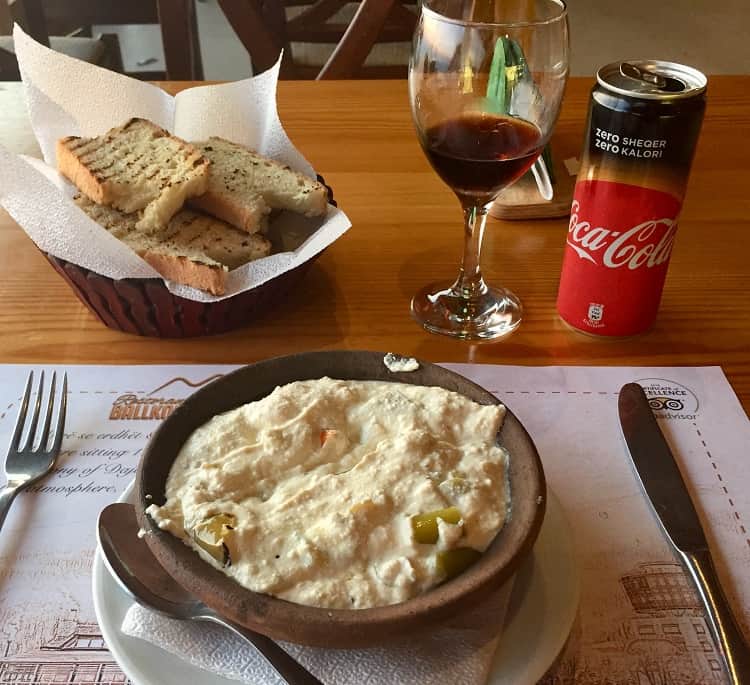
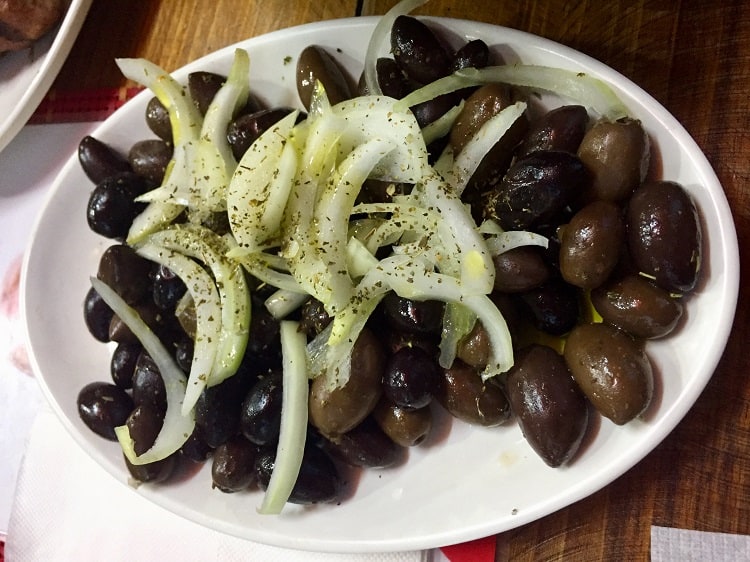
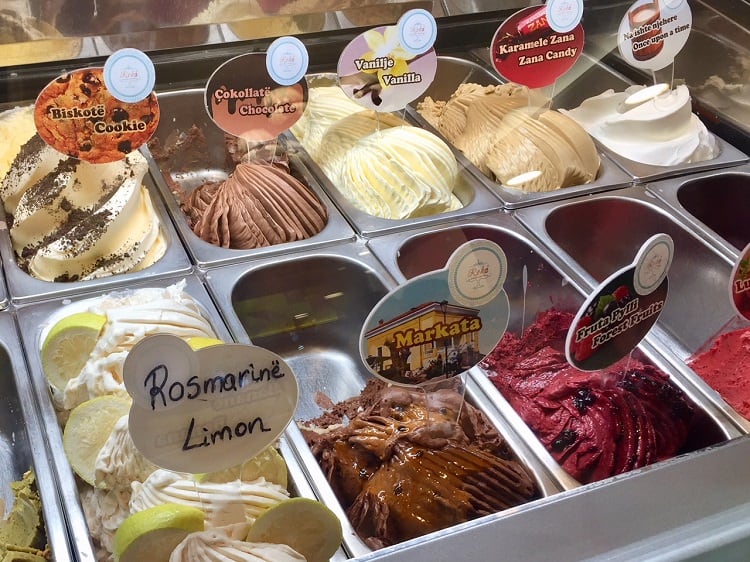
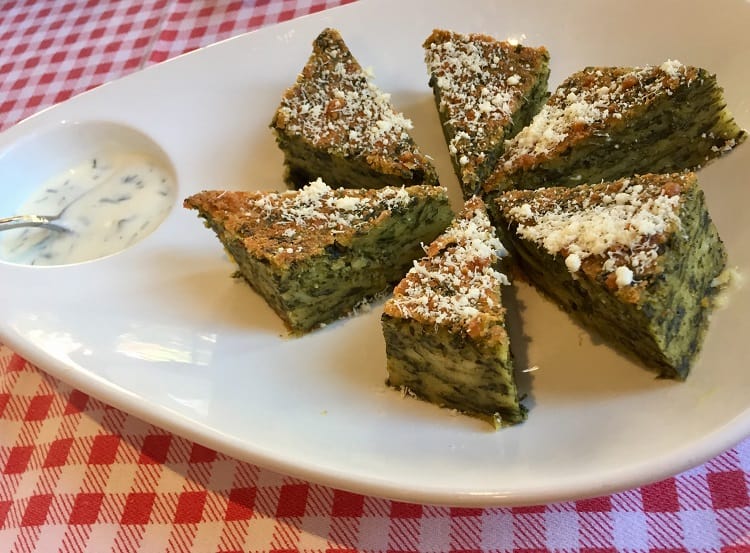
A scoop of Albanian gelato is just $.65. My favorite flavor: chocolate, dates, coconut, called “markata”- or market mix. Olive salad – a full plate of olives and onions can cost less than $1.50, and sausages, meatballs, chicken kebobs range from a dollar to $1.50 each.
To me, these look a helluva lot better than a Subway wrapper. Just sayin’.
Albanian economy, other prices
The signs of affluence we see in the city are different from the poverty we saw in the countryside, on our bus ride into Tirana. Instead of packed cafes, we saw horse-and-buggy carriages carrying supplies and whole families.
More than 40 percent of the Albanian population makes a living through agriculture. Rural Albanians are moving to Tirana with hopes of finding better paying jobs. Tirana residents leave Albania to find work with other European countries and send home remittances. Unemployment is at about 17 percent – not nearly as high as other Balkan countries.
You can take a round-trip, 20 minute cable car ride to the top of Dajti Mountain for $9. Five or 10 minute rides in Spain or Portugal cost more than that — each way. Once on the mountain, a sunset dinner for two including drinks and tip can be had for under $20.
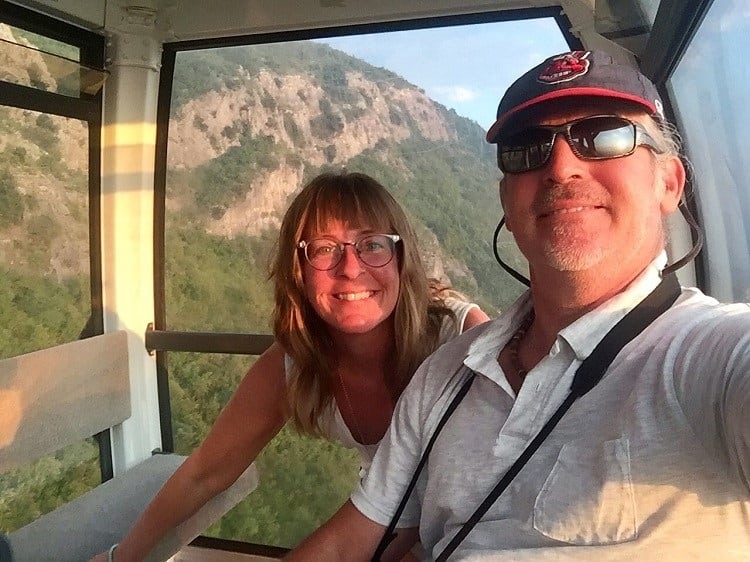
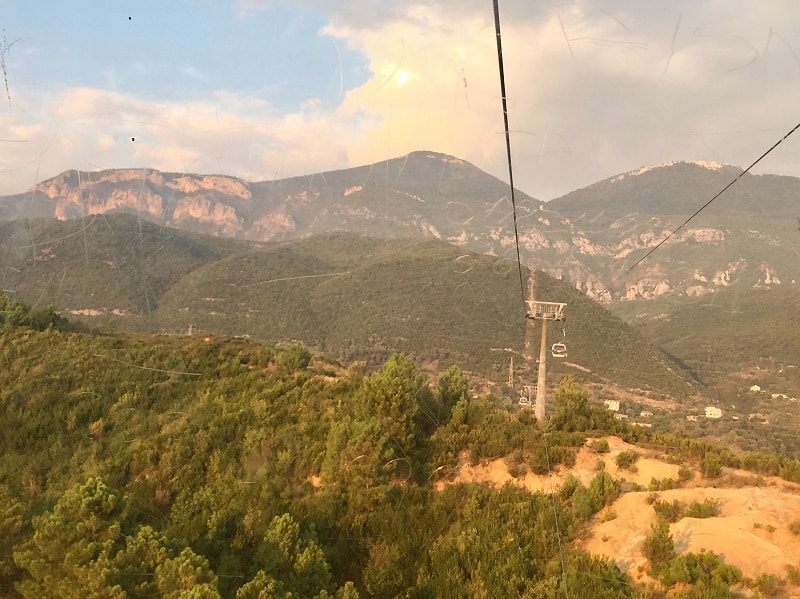
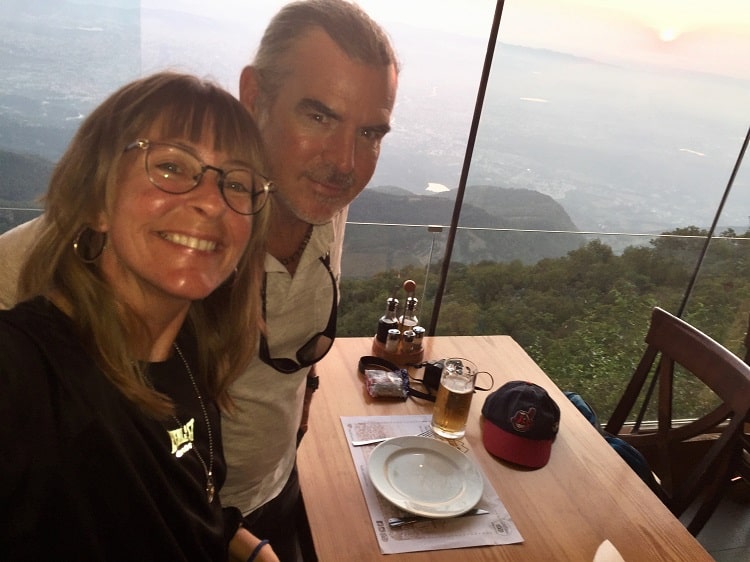
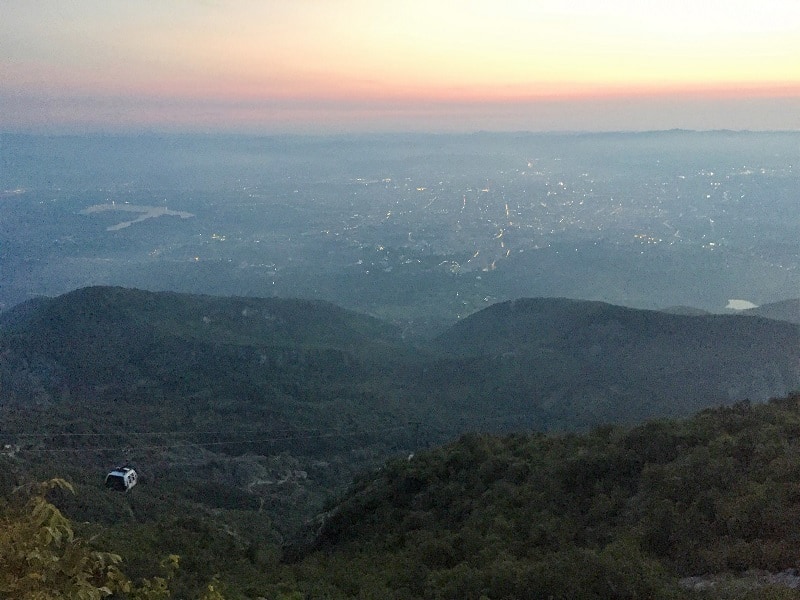
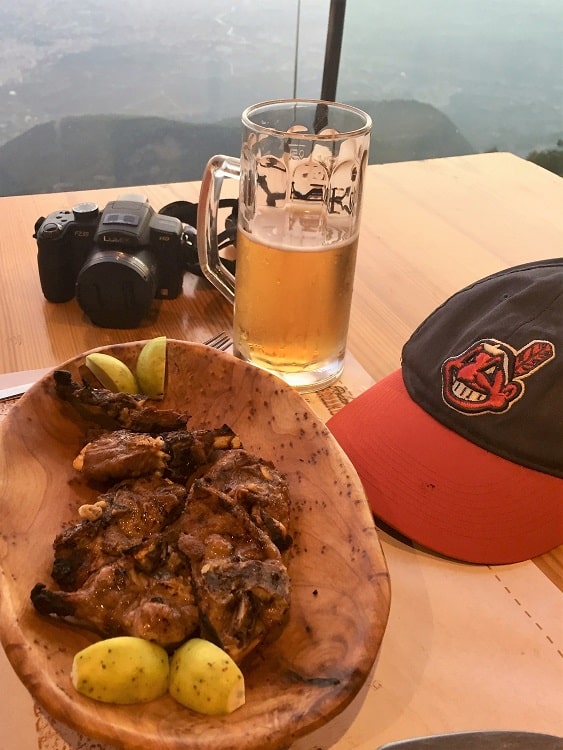
Admission to the country’s National History Museum on Skanderbeg Square costs under $2 (although English was scarce on displays on the second and third floors for some odd reason).
Taxis are metered, and reasonable. A bus from Skanderbeg Square to the Bunk’Art attraction at the edge of the city cost 40 cents each.
Tirana apartments are inexpensive to travelers, too. If you wanted to stay longer in Tirana, and are willing to stay 20 minutes outside the city center, a local told me a two bedroom apartment can cost just 120 euros a month. Inside the city center the price can range from 250 euros up to 1,000 euros and higher for the really exclusive addresses. (Most people own their apartments, so the rental market is somewhat tight.)
New construction began as soon as communism ended. Everyone had a home in those days, but that often meant 10 people shared one home. The construction we saw in Tirana today is mostly apartment buildings.
Each neighborhood we saw had abundant cafes, restaurants, food stores, convenience stores, bars, clothing and other shops, churches and mosques.
Religious harmony
We’ve talked to a few locals who say religious harmony is a key point of importance to this city. In communist days, religion wasn’t allowed and so whatever beliefs people had were kept private. The fact that people can openly practice religion, should they chose to do so, is a relative new luxury people don’t take for granted.
Locals also tell us although people may identify as Muslim or Catholic or Orthodox, not all of those people actually go to the mosque or to the church. It’s that same way in the U.S. I was born a Lutheran, but I never go to a Lutheran church.
Two new cathedrals for Catholics and Orthodox Catholics have been built in recent years in Tirana, but there was not a modern mosque. In fact, there are not many mosques. We do not hear many traditional calls to prayer in the way we heard them in Morocco or Bosnia and Herzegovina.
Since Albania is a poor country compared to other EU members, Turkey’s leader offered to build a new mosque in the center of Tirana, and the government agreed to accept the funds. Sixty percent of Albanians claim Islam as their religion, yet the main mosque in the country’s capital is a small 18th century structure that fit only 60 people, so Muslims pray in the street. When the new mosque is completed, it will be the largest in the Balkans.
Some people say this is Recep Tayyip Erdogan flexing his reach into the Balkans and they are concerned about implications on religious dominance. But locals we talked to will tell you Albania will always be progressive and open, because of its closed and secretive past. And, they tell us they religious harmony is more than promotion – it’s a way of life.
Communism versus capitalism
The whole communism versus capitalism thing is fascinating to me. Locals told us horrid stories from the communist days: terribly small rations for large families; no religious freedom; land taken from wealthy families and redistributed to the masses; everything for everyone was the same; there was a barbed-wire border with dogs and guards who would shoot on sight; war drills; propaganda out the you-know-what; and on and on.
Of course, capitalism is fraught with its own issues. It’s not immune to the corruption that invades politics due to basic human greed. But at least people have a chance to get ahead — to be rewarded for hard work and effort. They have a right to be individuals.
Judges and prosecutors in Albania are currently under investigation for business ties to legal matters they may have handled, or for having more money or goods than their salaries would buy. The average salary for a judge is just $1,300 a month. This judicial vetting process is one of the conditions Albania must meet for entrance into the European Union. As we Americans well know, without an ethical, independent judicial branch, there is no hope for a true democracy
There are a few big media companies in Albania, with smaller ones dealing with advertising revenue shortfalls that are leading to layoffs. So similar to the U.S.
The infamous “pyramid” in Tirana will be torn down, and the plot will be redeveloped. It was built to honor former leader Enver Hoxha, but it now stands in shambles. There had been debate about saving it as part of the country’s history.
As of this writing, tourists and travelers stop there to climb up to the top, like Tedly did.
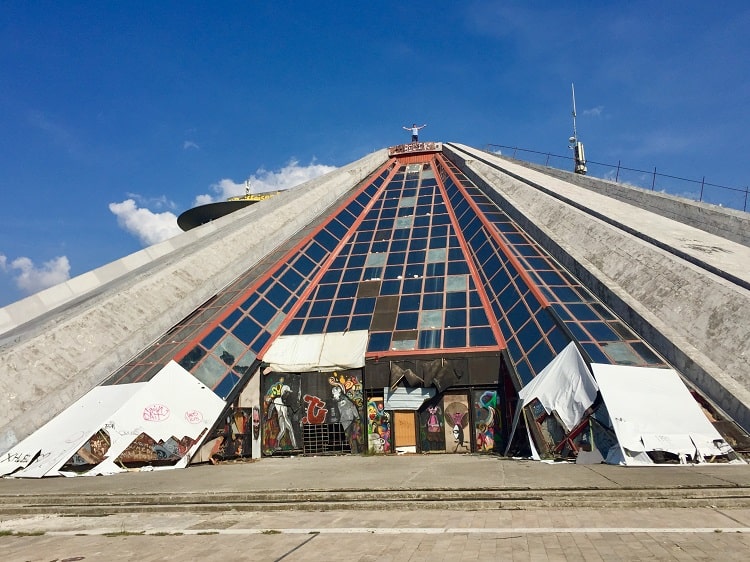
Despite current challenges in this nearly 30-year-old democracy, there is an overall feeling of hope that both Tedly and I sensed. It’s such a refreshing change from the more jaded views of locals that I’ve experienced in other European countries.
It’s as if people know life in Albania right now is about the best it’s ever been in recent times, and people have hope it can still be even better. I hope with them.
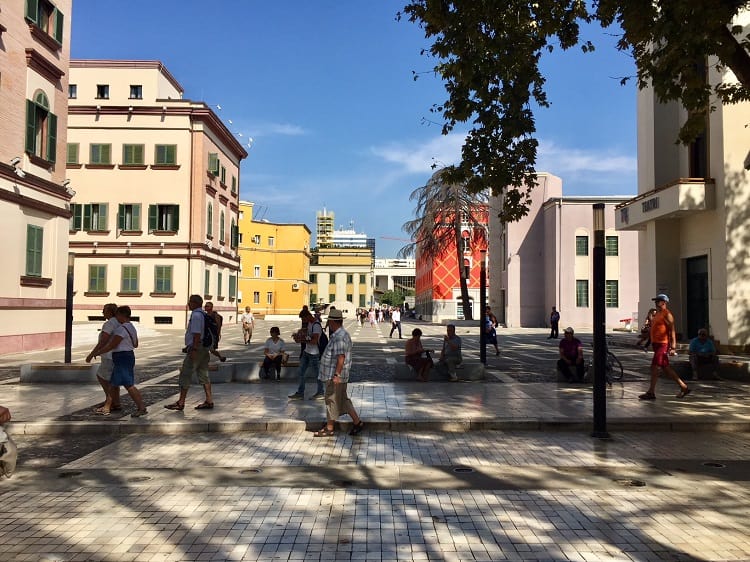
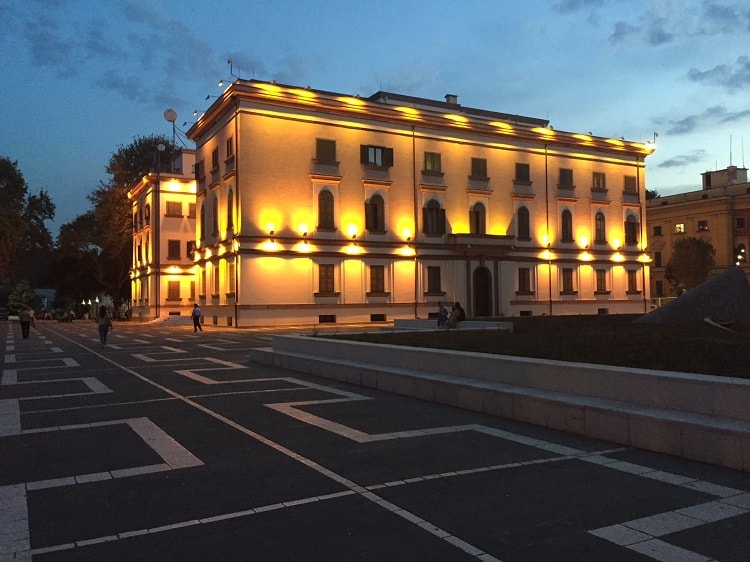
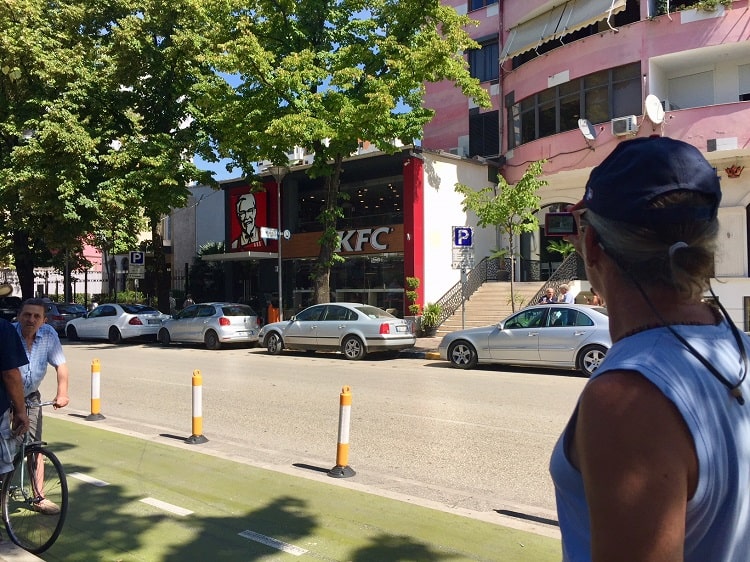
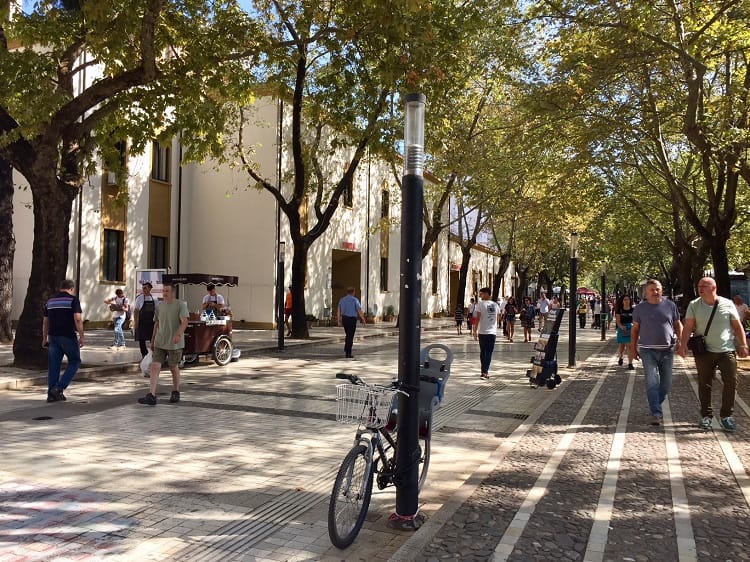
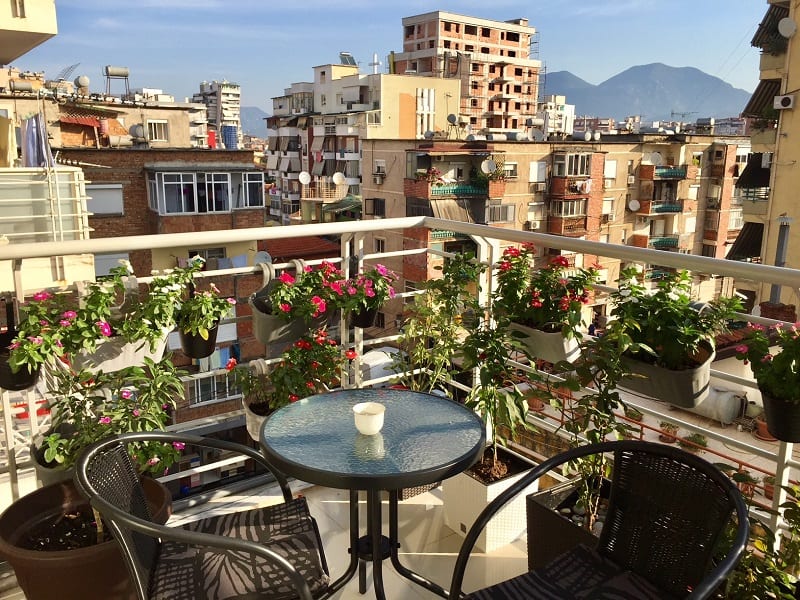
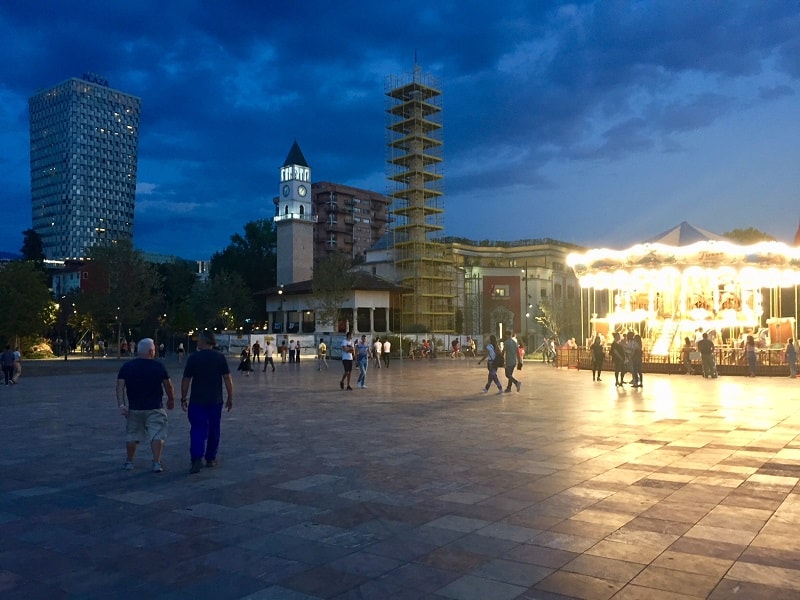
Editor’s note: This post was updated in May 2020 to remove an inactive link for the cable car.
Other Albania content:
- Bus trip from Montenegro into Albania
- BUNK’ART: Inside the madness of an atomic war bunker
- Travel notes on Albania and Saranda
Earth Vagabonds Newsletter
